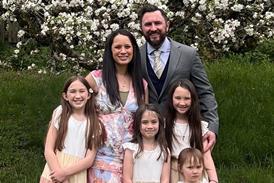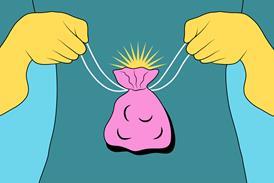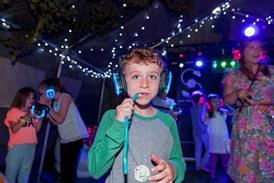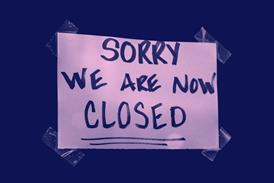Why is saying sorry so hard? Paul Cable sees this both as a result of sin and our current cultural condition
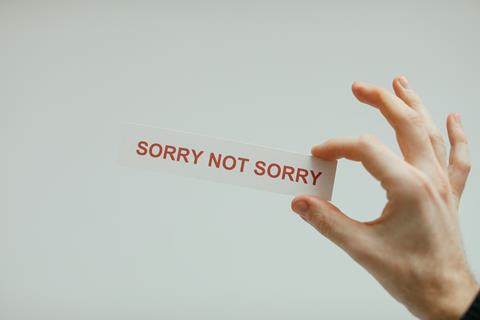
When did “sorry” stop meaning “sorry”? And… what does this mean for how we approach the topics of sin and repentance with our youth and children?
”I ate the last slice of pizza. Sorry not sorry.”
“Yeah, I had my music up all the way. Sorry not sorry — it’s a great playlist!”
When was the last time you found yourself saying—or hearing—something like this?
We’ve traded priests for therapists
These phrases have become part of our cultural script. They reflect a subtle but profound shift: we might recognise that our actions inconvenience or hurt others, but we shrug it off in the name of authenticity. The implied message is: as long as I’m being true to myself, it’s okay. In today’s culture, the highest good is not necessarily traditional virtues like kindness, truth, or humility—it’s self-expression. “You do you,” has become the mantra we live by.
This shift is best illustrated with two books, written a thousand years apart. We are about to get a little nerdy… sorry not sorry.
Augustine’s Confessions
A classic Christian text on the art of “saying sorry” is Augustine’s Confessions written around 400 AD.
Confessions is a raw and honest reflection on Augustine’s own sinfulness and his need for God’s grace. In a prayerful examination of his own heart, he looks outside of himself to God his creator for forgiveness and restoration.
Augustine writes:
“You have made us for yourself, O Lord, and our hearts are restless until they rest in you.”
Repentance isn’t just what we do when we feel bad (or managing our guilt)—it’s about coming home, resting in the one we were made to enjoy. Sin is not just about breaking rules; it’s about breaking relationship.
Rousseau’s Confessions
Fast-forward about 1300 years to another book titled Confessions—this time by Jean-Jacques Rousseau, a secular 18th-century philosopher. In contrast to Augustine, Rousseau’s book is a celebration of the self. From the very first line, Rousseau sets a different tone. He doesn’t repent, he justifies himself. He doesn’t ask for forgiveness—he’s desperate to be understood and accepted as he is.
can we make our prayers of repentance audible to our children?
Where Augustine sees the human heart as fallen and in need of redemption, Rousseau sees it as fundamentally good— corrupted only by society. He blames the world around him for his mistakes and revels in his uniqueness. It’s less about transformation, and more about self-explanation.
Rousseau’s legacy still echoes loudly today…
The challenge ahead
So, what does this brief history lesson (thanks for staying with me!) have to do with how we talk about sin and repentance with young people?
Everything!
In a world viewed through the lens of Rousseau, many teenagers (and adults) struggle to understand or apply the concept of sin because:
- We’ve traded priests for therapists. We now live in an age where it feels more natural to speak with a therapist than confess our sins to a priest. This is not a bad thing, but it reflects a shift. We talk about trauma, brokenness, triggers, and growth, but rarely about sin, guilt, or repentance. Healing is now inward and self-directed, rather than relational and grace dependent.
- We’ve placed identity above accountability. The idea that the highest good is to live out our authentic self has led many of us to believe that any critique of our behaviour is a critique of who we are. As a result, “you did something wrong” easily gets interpreted as “you’re not accepted,” and conversations about sin feel like rejection instead of invitation.
So, we have a challenge on our hands — but not all is lost…
Talking about sin with young people
We’re living in a cultural moment increasingly shaped by Rousseau’s “inward turn.” Rather than dismiss this shift entirely, perhaps there are aspects of it that can actually deepen our understanding of sin—and even bring fresh perspective to Augustine’s earlier insights.
Take the therapeutic insight that “all behaviour is communication.” Imagine a teenager lashing out when someone accidentally bumps their chair; they shout with clenched fists – what we see looks like an overreaction. We might be tempted to label it “bad” or even “sinful.”
But what if that behaviour is telling a deeper story?
Perhaps it’s a reaction rooted in pain—maybe the young person has grown up in an unsafe or unstable environment. Their behaviour isn’t just a moral failure; it’s a cry for safety. They’re communicating something they may not yet have words for.
Let’s make sure that our children hear us say “sorry” when it matters
This is where a Christian understanding of sin offers something rich and nuanced. Sin isn’t always about deliberate rule-breaking. We might act out of fear, or simply out of a desire to belong. Our behaviours are often shaped by a broken and sinful world. Scripture makes room for this complexity.
The apostle Paul describes sin not only as something we do, but something that masters us. In Romans 6, he says we are “slaves to sin,” and later writes: “I do not understand what I do. For what I want to do I do not do, but what I hate I do” (Romans 7:15).
Paul is naming something we all feel: sin is not always about conscious choices – it’s about inner conflict, compulsion, and corruption. It has power over us. And left to ourselves, we are powerless to overcome it.
This is a helpful starting point when talking about sin with youth and children. It meets them on familiar ground, acknowledges complexity, and expands their understanding. Sin isn’t just the wrong things we do – it’s a condition that infects us, an enemy that enslaves us.
But we can’t stop there.
Why?
Because our infected hearts don’t just suffer—they harm others. The evil we see “out there” in the world also spills out from within us.
Recently my six-year-old and I were talking about war. He concluded, “People just need to be better at sharing.” It was a great moment to talk about how that very struggle—refusing to share—lives in his own heart, too. The evil in the world is not just “out there”. It’s “in here”, and we all need the cure.
Read more:
Make your home the safest space for the biggest conversations with your youth and children
Answering your child’s questions: Is God dead?
Answering your child’s questions: Aren’t all religions basically the same?
There is good news… Christianity doesn’t just diagnose the problem, it offers a cure, a cure that doesn’t come from within, but from outside of us, in the saving work of Jesus. The gospel tells us our story doesn’t end as victims of sin’s power. In Christ, we are invited to be set free. Not just understood—but transformed. Not just heard but healed. Not merely accepted as we are but made new.
Let’s help young people connect the sinful patters they see “out there” with the patterns they see playing out from their own hearts. This can be enriched further by allowing them a window into our own experience, naming how the brokenness of the world plays out in our lives. Let’s make sure that our children hear us say “sorry” when it matters, and where appropriate, can we make our prayers of repentance audible to them?
Because in the end, we all share the same condition and we all have access to the same rest, in the God who made us for himself.



